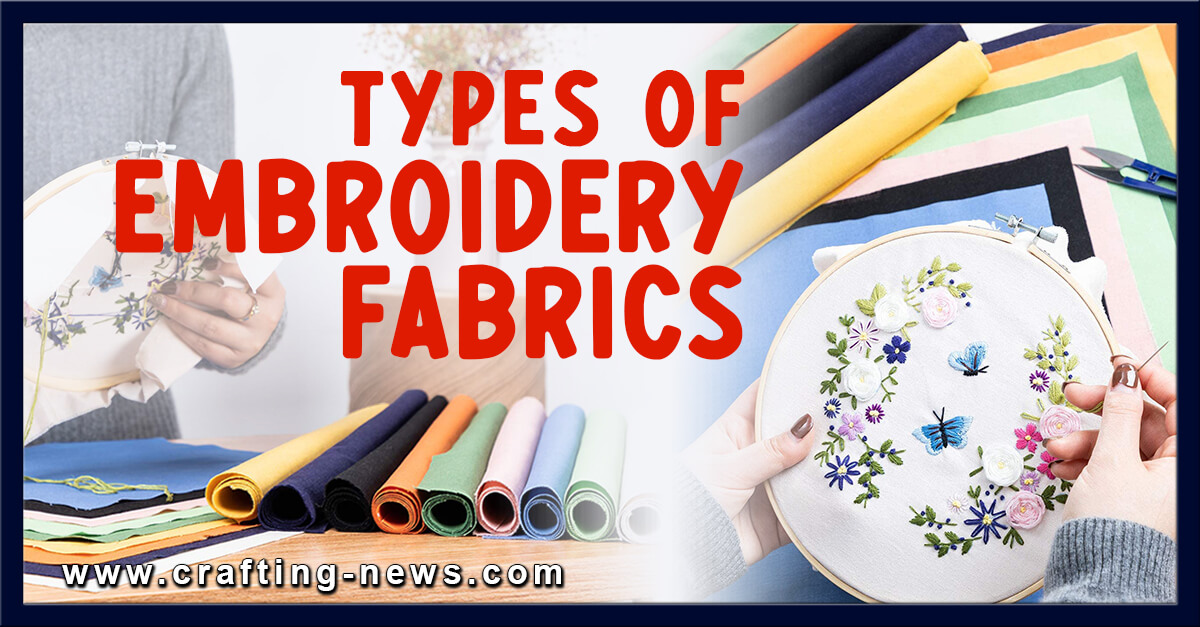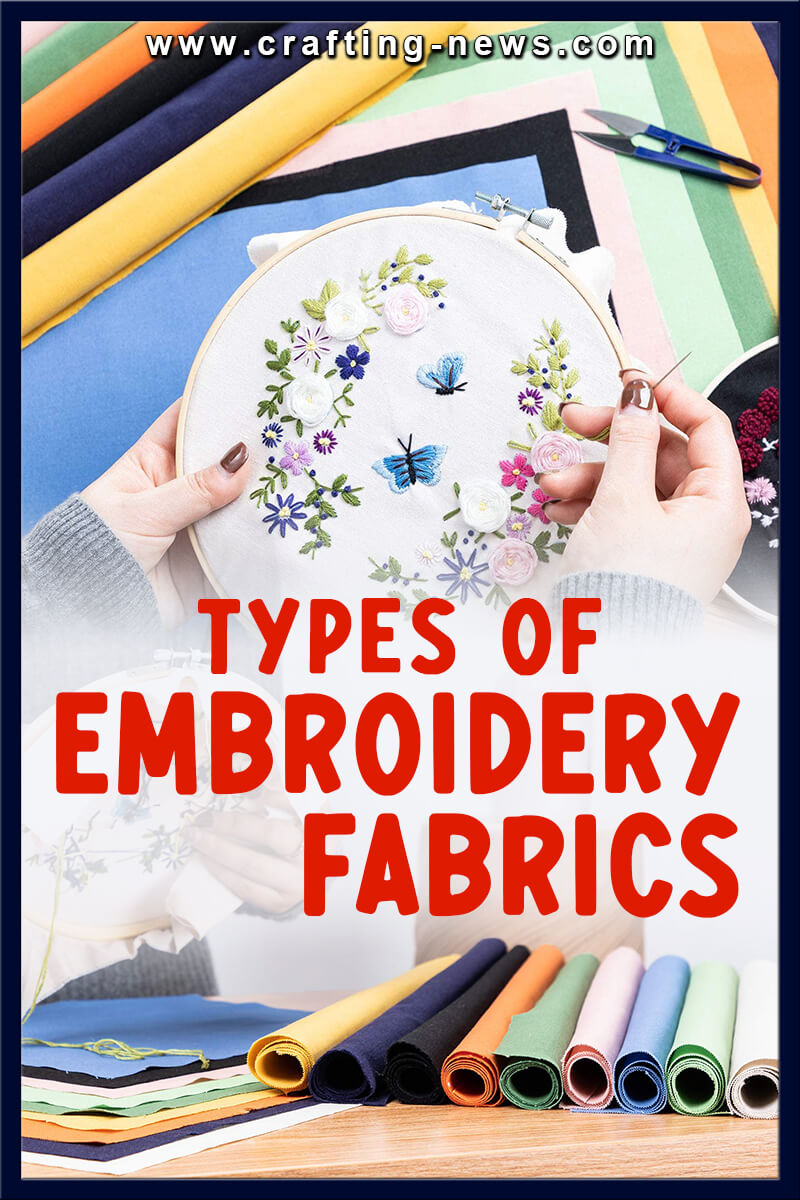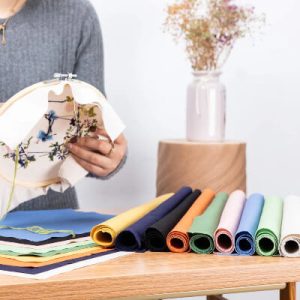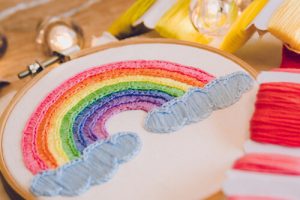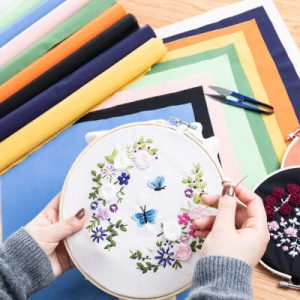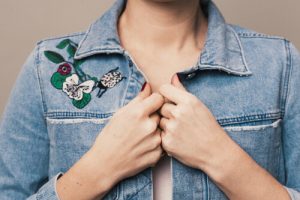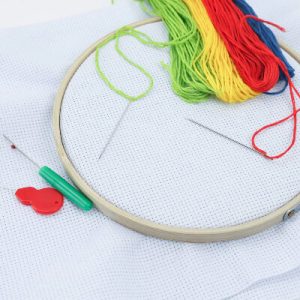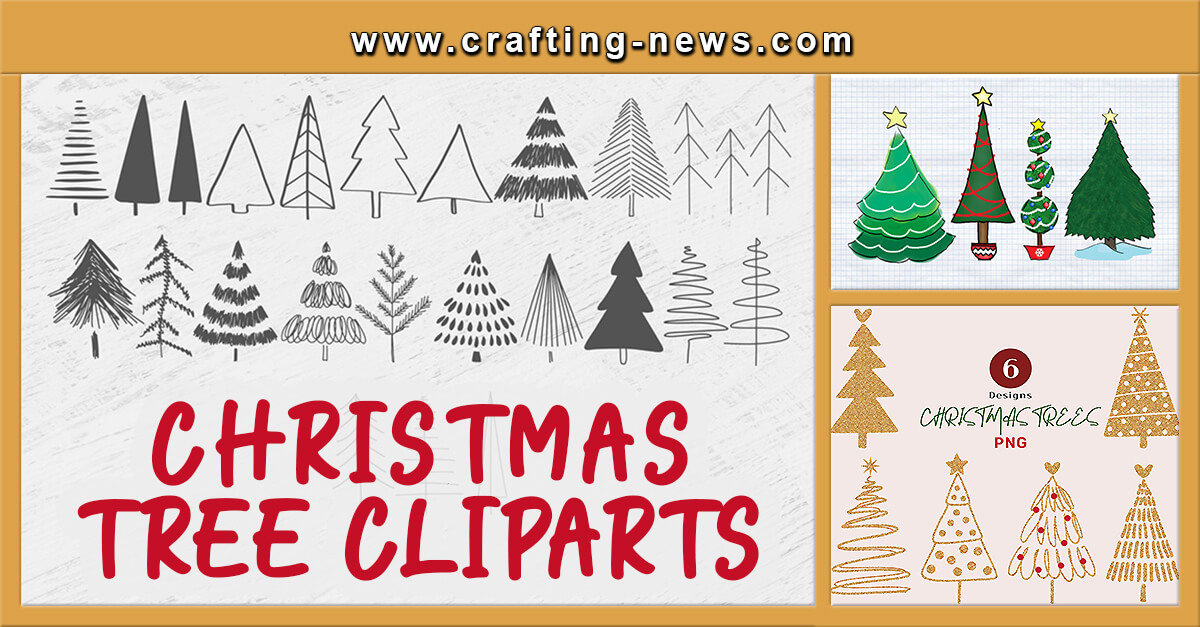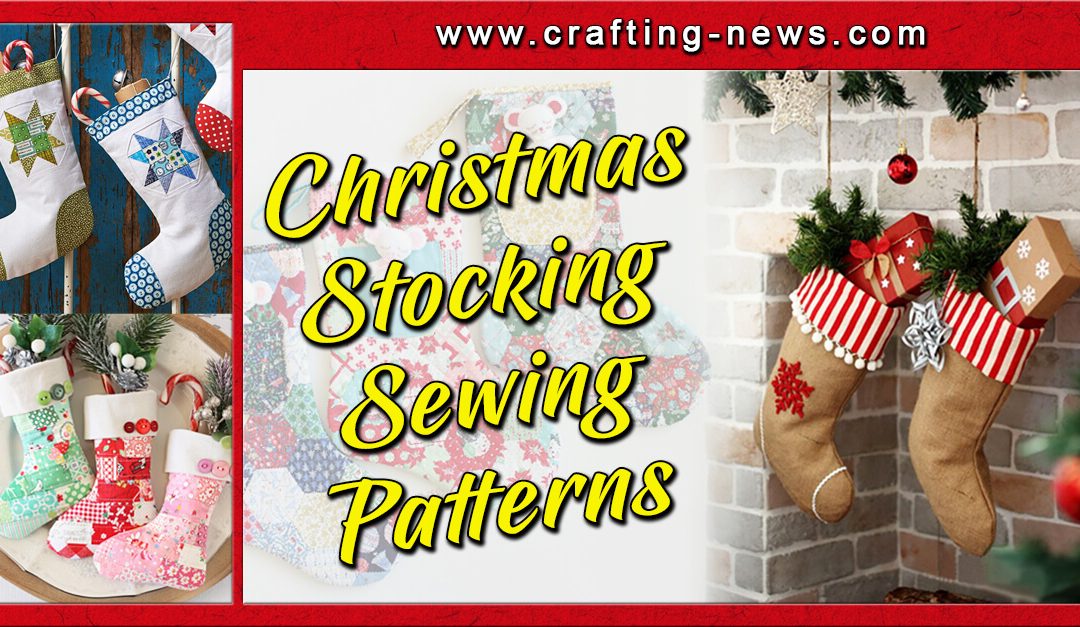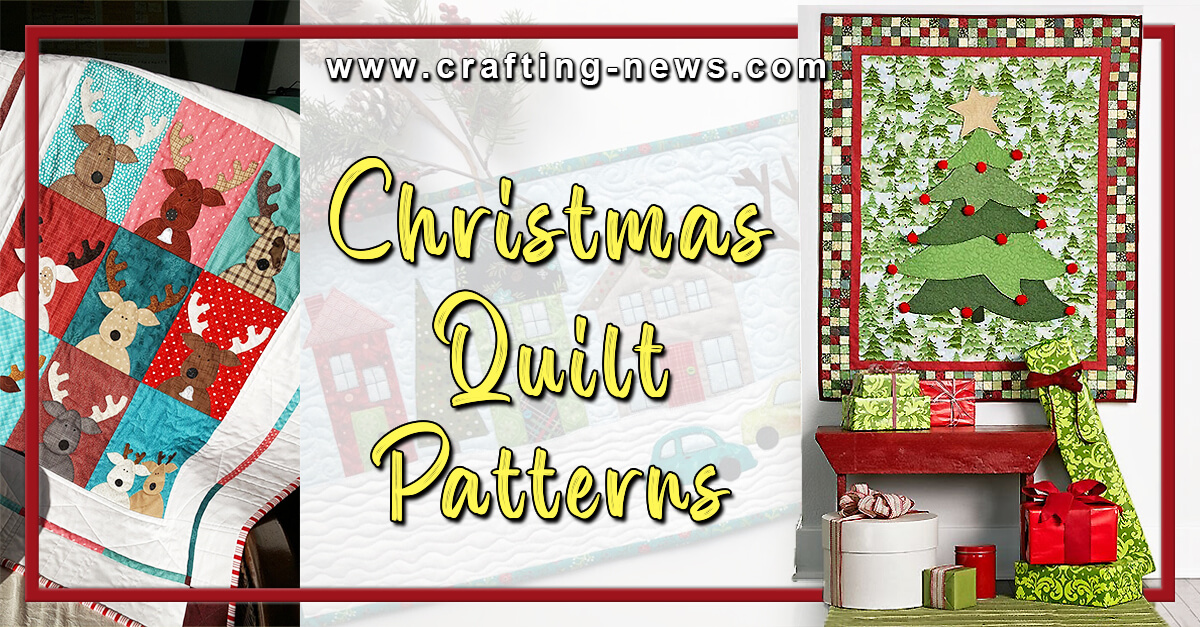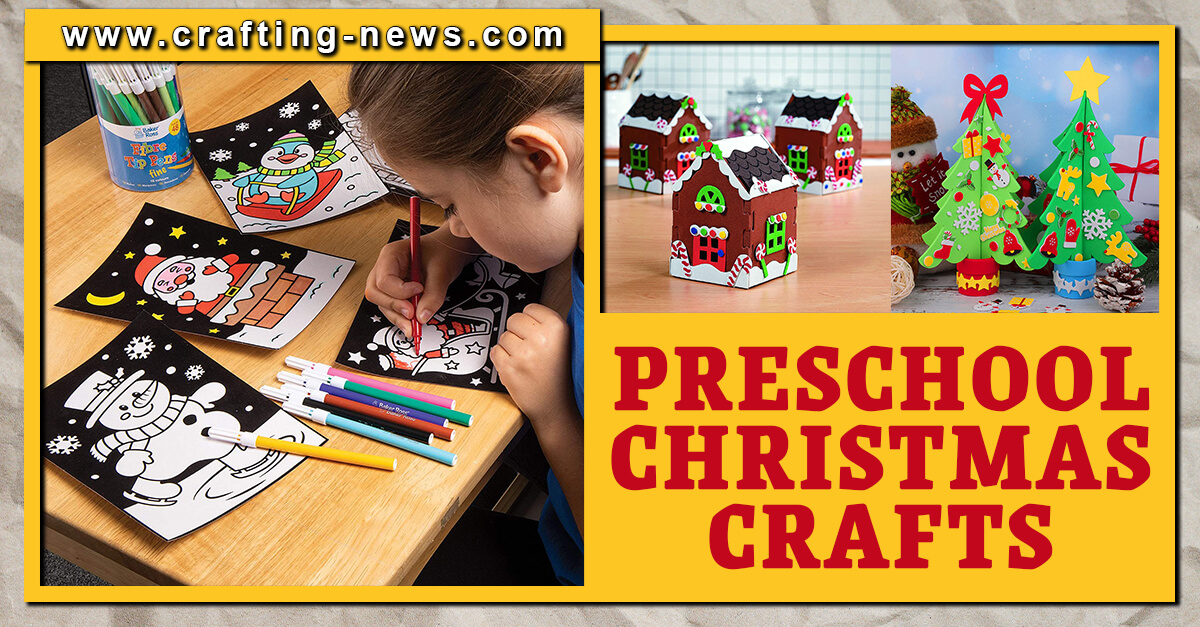Embroidery is a crafting technique that is practised around the world. It can be dated back the 30,000 B.C. Embroidery uses a wide range of stitches to create decorative designs. The variety of stitches used in embroidery can vary between flat stitches and dimensional stitches. They can be randomly applied to add details or placed directly against each other to cover a solid area of embroidery fabric.
When embroidering, you can use various types of materials. This makes embroidery versatile. You can embroider practically anything from wall hangings to towels and clothes. Below, I have created a list of the most common types of embroidery fabrics.
What Type of Fabric Do you Need for Embroidery?
If you are new to embroidery, you may be confused at what you need. That will depend on if you are interested in hand embroidery or machine embroidery. One common supply you need for both techniques is fabric. But which kind? To learn more about embroidery fabrics, continue reading below.
Loose Weave vs Tight Weave Embroidery Fabric
There are many types of fabric you can use for embroidery. However, they all fall into two main categories: loose weave and tight weave.
Loose weave fabrics usually have a “count.” The count refers to the number of holes per inch. This number gives you an indication of how loosely the fabric is woven. Loose weave fabric is often used for cross stitching and punch needle.
Tight weave fabric has fibres that are tightly woven together. This type of fabric does not usually have a count. Tight weave fabrics are typically used for hand embroidery and machine embroidery.
Best Fabrics for Embroidery
The best embroidery fabrics are tightly woven. When working on embroidery projects, you will usually choose a fabric with natural fibres. The natural fibres are easier to work with than synthetic fibres.
6 Types of fabric used in embroidery
1. Traditional Linen
Traditional linen is a great choice for embroidery. It can be used for both hand embroidery and machine embroidery. However, if you are using it for machine embroidery, you may need to modify your setup. It is a durable fabric with a unique texture that can complement designs.
Pros of Traditional Linen
- Durable
- No guidelines
- Even weave
Cons of Traditional Linen
- Usually woven with a single thread
- Weave can be uneven
- Often only found in neutral colours
- Can have a rough texture
2. Cotton Fabric for Embroidery
Cotton is a versatile fabric. It is easy to work with and comes in a wide variety of colours. You can purchase cotton fabric off a bolt or embroider premade pieces such as t-shirts, curtains, or pillowcases.
Pros of Cotton
- Inexpensive
- Available in a lot of colours
- Lightweight
- Versatile
Cons of Cotton
- Cotton can shrink
- Must be washed before use
3. Denim
Upcyling old denim clothing has become a huge trend. You can customise pants, shirts, and jackets. The fabric is sturdy and durable with a tight weave.
Pros of Denim
- Sturdy
- Tight fibres
Cons of Denim
- Need heavy duty sewing machine for machine embroidery
- Can be hard to push your needle through
4. Even weave
Even weave fabric has horizontal and vertical fibres that are equally spaced. The holes between the fibres are visible and easy to count. It can be used for embroidery, but we would not recommend it. The large holes make it too hard to get smooth stitches or create intricate details. We would only recommend even weave fabrics, such as Aida, for cross stitch or punch needle.
Pros of Aida
- Inexpensive
- Available in a lot of colours
- Even weave
- Easy to work with
Cons of Aida
- Large holes
- Not intended for traditional embroidery
5. Satin and Silk
Satin and silk can be embroidered. However, they do require a lot of experience. The fabrics are slippery and hard to work with. The fabric is delicate and easy to rip. When embroidering silk, use small designs. Large designs can weigh the fabric down, interfering with the elegant drape of the fabric.
Pros of Silk
- Lightweight
- Tightly woven
Cons of Silk
- Large designs interfere with the drape
- Hard to work with
- Needs a stabilizer
6. Canvas Fabric
Canvas is another favourite fabric used in embroidery. Unlike most embroidery cloth, it is made with a mixture of natural fibres and synthetic fibres. You can find canvas in a wide range of colours. Popular canvas items to embroider are tote bags.
Pros of Canva
- A tight weave keeps the stitches in place
- No guidelines
- Prevents tears
Cons of Canvas
- Can fray
- Different types can be harder to work with
Once you have practised basic embroidery techniques, try using different fabrics. You may be surprised at how much you enjoy working with various types of embroidery fabric.
Embroidery is a fun and relaxing hobby. It can be appreciated by people of all ages. And unlike many other hobbies, it is easy to learn and master. Here are embroidery related articles for you: How To Thread an Embroidery Needle Tutorial, and Cross Stitch Vs Embroidery.
If you are new to embroidery or are just looking for different fabrics to use, try working with some of the embroidery fabric choices I listed above.

